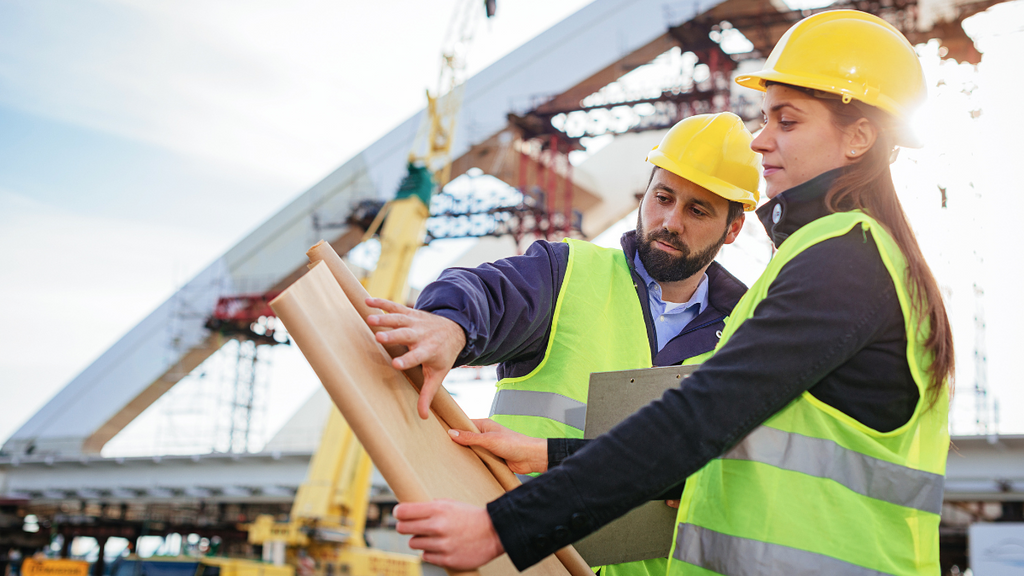How Geotheta can Save You Time, Stress, and Money.
How Geotheta can Save You Time, Stress, and Money.
Blog Article
What Does Geotheta Mean?
Table of ContentsThe Ultimate Guide To GeothetaGeotheta Can Be Fun For AnyoneThe smart Trick of Geotheta That Nobody is Talking About3 Simple Techniques For GeothetaFacts About Geotheta Revealed

They conduct site examinations, collect samples, execute laboratory examinations, and examine data to evaluate the viability of the ground for building jobs - Consulting Engineer. Based upon their searchings for, geotechnical designers offer recommendations for foundation design, slope stability, preserving frameworks, and reduction of geotechnical hazards. They team up with various other experts, such as engineers, structural engineers, and building groups, to make sure that geotechnical considerations are integrated right into the overall job style and application
By examining the actions and residential or commercial properties of soil and rock, they can recognize possible geotechnical hazards such as landslides, dirt settlement, or incline instability. Their competence aids protect against failings or crashes that might threaten lives and building. Right here are some in-depth tasks and obligations of a geotechnical designer: Website Examination: Geotechnical designers conduct site investigations to collect data on subsurface problems.
They interpret the information to recognize the homes and habits of the dirt and rock, including their toughness, leaks in the structure, compaction attributes, and groundwater problems. Geotechnical Evaluation and Style: Geotechnical engineers evaluate the information collected during site investigations to examine the stability and viability of the site for building jobs. They carry out geotechnical computations and modeling to assess elements such as birthing ability, settlement, slope security, side earth stress, and groundwater circulation.
Facts About Geotheta Revealed
Structure Layout: Geotechnical designers play a crucial role in creating foundations that can safely sustain the designated structure. They assess the soil problems and tons requirements to establish the proper structure kind, such as shallow structures (e.g., footings), deep foundations (e.g (https://www.openstreetmap.org/user/geotheta)., stacks), or specialized strategies like soil enhancement. They consider aspects such as negotiation limits, bearing capacity, and soil-structure communication to develop optimum structure layouts
They review building strategies, monitor website tasks, and carry out field assessments to confirm that the style recommendations are followed. If unforeseen geotechnical concerns occur, they analyze the circumstance and supply recommendations for remediation or changes to the layout. Risk Analysis and Reduction: Geotechnical designers analyze geotechnical dangers and threats linked with the job website, such as landslides, liquefaction, or dirt erosion.

Collaboration and Interaction: Geotechnical engineers work very closely with various other specialists included in a task, such as engineers, architectural engineers, and building teams. Efficient interaction and partnership are vital to integrate geotechnical factors to consider right into the overall task design and building and construction procedure. Geotechnical engineers offer technical know-how, answer inquiries, and ensure that geotechnical requirements are satisfied.
The Facts About Geotheta Revealed
Right here are some kinds of geotechnical designers: Structure Designer: Foundation designers focus on developing and evaluating foundations for frameworks. They assess the dirt problems, load requirements, and website attributes to establish the most suitable structure kind and design, such as superficial foundations, deep foundations, or specialized strategies like heap structures.
They view it evaluate the aspects affecting slope stability, such as dirt properties, groundwater problems, and slope geometry, and develop approaches to avoid incline failures and alleviate threats. Quake Designer: Quake designers concentrate on assessing and creating frameworks to hold up against seismic forces. They examine the seismic threat of a website, evaluate soil liquefaction possibility, and create seismic style requirements to ensure the safety and resilience of frameworks during earthquakes.
They do area testing, accumulate samples, and analyze the accumulated data to define the soil residential properties, geologic developments, and groundwater conditions at a site. Geotechnical Instrumentation Engineer: Geotechnical instrumentation designers focus on monitoring and determining the actions of dirt, rock, and frameworks. They set up and maintain instrumentation systems that keep track of aspects such as soil settlement, groundwater levels, slope activities, and architectural displacements to evaluate performance and give very early warnings of possible problems.
Some Known Incorrect Statements About Geotheta
They conduct tests such as triaxial tests, debt consolidation tests, straight shear examinations, and leaks in the structure examinations to collect data for geotechnical analysis and style. Geosynthetics Designer: Geosynthetics engineers concentrate on the layout and application of geosynthetic products, such as geotextiles, geogrids, and geomembranes. They make use of these materials to enhance dirt stability, strengthen slopes, give drainage solutions, and control disintegration.
They have a tendency to be investigatory people, which means they're intellectual, introspective, and investigative. They are curious, methodical, rational, logical, and rational. Some of them are also social, meaning they're kind, generous, participating, patient, caring, helpful, compassionate, skillful, and pleasant - Engineer of Record.
In the office setting, geotechnical designers utilize specialized software tools to execute estimations, develop layouts, and examine data. They prepare records, evaluation task specs, connect with customers and staff member, and coordinate project tasks. The office setting gives a conducive environment for study, evaluation, and cooperation with other experts associated with the project.
The Of Geotheta
They frequently visit project sites to carry out site investigations, analyze geotechnical conditions, and gather data for evaluation. These sees involve taking a trip to various areas, sometimes in remote or challenging terrains. Geotechnical engineers may execute soil tasting, conduct examinations, and display building activities to ensure that the geotechnical aspects of the job are being executed correctly.
Geotechnical engineers also work in specialized geotechnical laboratories. In these facilities, they carry out experiments, execute examinations on soil and rock examples, and evaluate the design residential properties of the products. Geotechnical lab designers work extensively in these settings, handling screening devices, operating tools, and tape-recording data. They team up with various other research laboratory staff to ensure precise and reputable screening outcomes.
Report this page